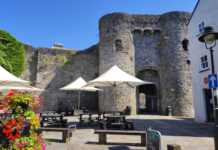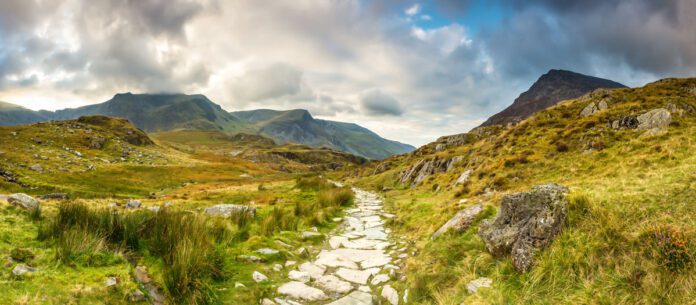- Artist impressions show the stark future of UK national parks based on current walking habits
- Images show the impact of footpath erosion and littering on iconic locations like the Lake District and Snowdonia
- Research names the Peak District as the national park most in need of protection
New images have been released which show the stark future of the UK’s national parks if current walking behaviours continue, with footpath erosion and mass littering having a massive impact on our favourite natural spaces.
Rohan, the outdoor and travel clothing company, has been inspiring people to adventure into the great British countryside since 1972, so as part of its 50th anniversary, the company is launching a range of initiatives, such as research into the nation’s walking habits, to help raise awareness of and protect the areas that the public know and love.
For National Walking Month (May), Rohan used a variety of data sources, such as visitor numbers and environmental offences, to identify the national parks most in need of protection, and then looked ahead 50 years to see what they could look like if no action is taken.
The Great Ridge, Peak District
The Peak District, the UK’s oldest national park, tops the list, with the latest data showing a staggering 178% increase in visitors between 2016-19. The Great Ridge, which leads up to Mam Tor, is one of its most popular routes, and artists have visualised how heavy footfall could widen and damage the footpath.
Cat Bells, The Lake District
The Lake District takes second place, with over two million annual visitors and by far the most online interest of all the parks. The park’s website was viewed almost 100 million times in 2021 and there are nearly 130 million hashtags mentioning the Lake District on Instagram and TikTok.
Snowdonia
The impact of the post-lockdown tourism boom in Snowdonia has been well-documented, but visitor numbers were already on the increase before the pandemic, with a 60% rise between 2016-19. There were nearly two million Google searches for the park last year, which is second only to the Lake District.
Loch Lomond
The most under-pressure Scottish national park is Loch Lomond and the Trossachs, which is home to popular Munros such as Ben Lomond, and the internationally renowned West Highland Way. In 2021, there were over 30 million visits to its official website, which was the second-highest of any UK national park.
Joanne Backshall, Programme Manager at Fix the Fells, explains what footpath erosion is, how people can help to minimise it and what could happen to the UK’s favourite routes in the next 50 years if they aren’t protected.
“Footpath erosion is where trampling has killed vegetation and exposed bare soil and loose stone, which gets washed away to create unsightly gullies and scars in the landscape. It’s caused by a combination of people and rainwater, and the severity is largely determined by the number of walkers and how many stray from the designated path.
“If no action is taken to look after paths and repair damage, then erosion will spread – more vegetation will be trampled and die, more soil and stone will be exposed and washed away, and ultimately more of our stunning mountain tops, ridges and main routes will become gullied and ugly.
Giles Polito, Marketing Director at Rohan, said: “We’re incredibly fortunate in the UK to have such stunning national parks on our doorstep and it’s fantastic that so many people are getting out to enjoy them.
“Since our launch in 1972, we’ve always encouraged the nation to head outside and explore these spaces, but it’s also important that we do everything we can to protect them, particularly those with high footfall, so that future generations can appreciate them as much as we do.
“We all have a joint responsibility to look after the British countryside and listening to and supporting charities like Fix the Fells is a great way to play your part.”
For more research about the future of the UK’s national parks, visit: https://www.rohan.co.uk/explore/nationalparks
Help keep news FREE for our readers
Supporting your local community newspaper/online news outlet is crucial now more than ever. If you believe in independent journalism, then consider making a valuable contribution by making a one-time or monthly donation. We operate in rural areas where providing unbiased news can be challenging. Read More About Supporting The West Wales Chronicle


























